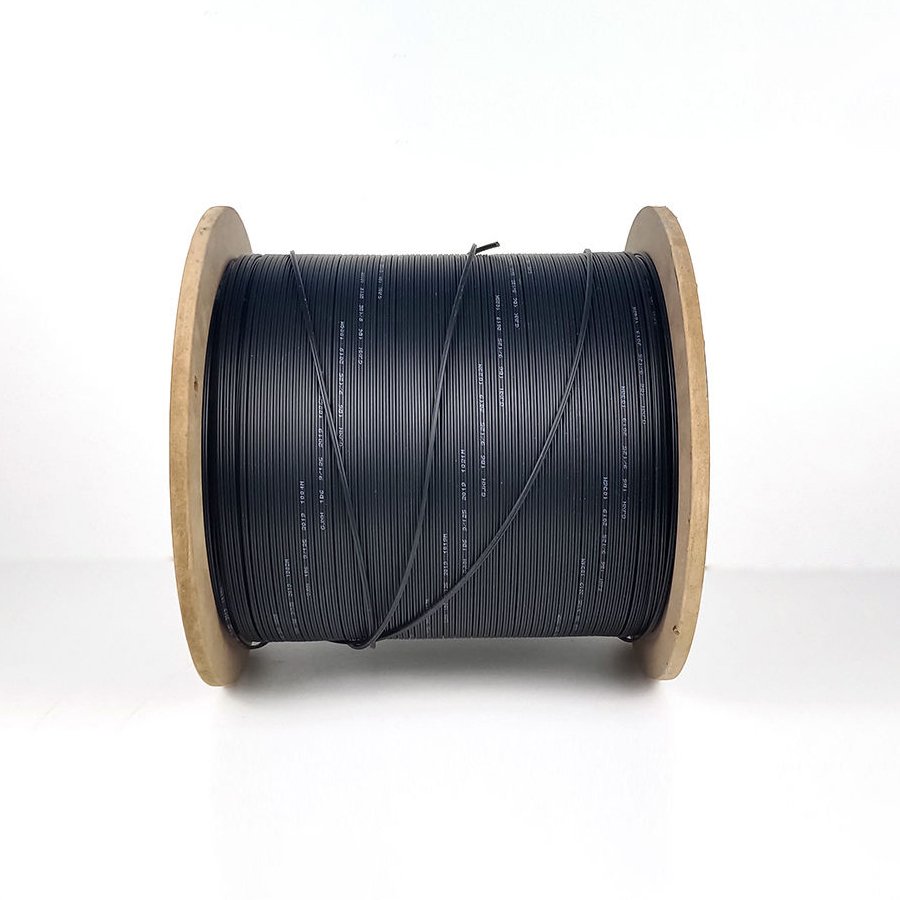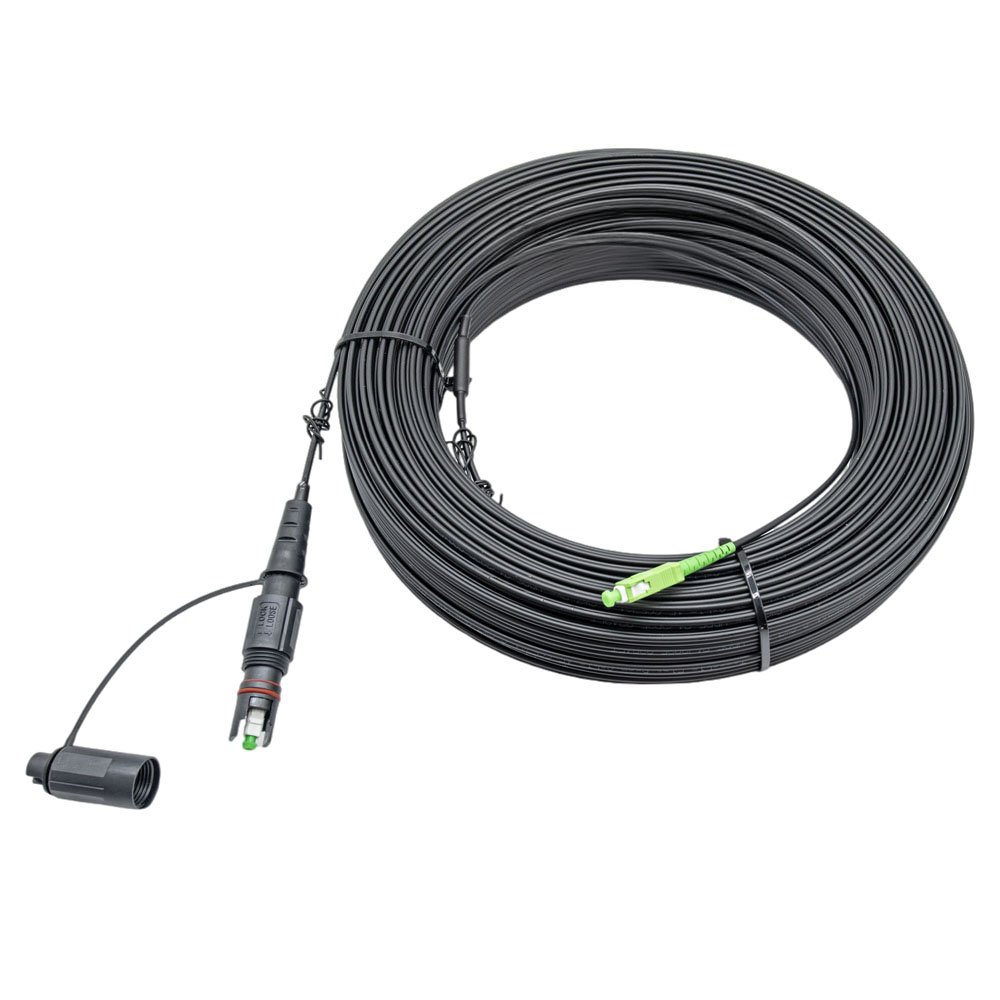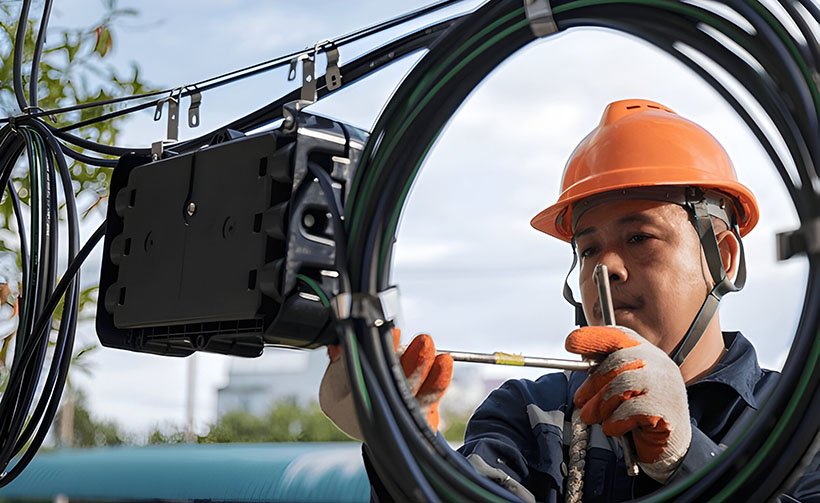Picture data zipping through cables like cars on a highway. Now, imagine two types of roads: one’s a narrow, single-lane track built for speed over long distances, while the other’s a wider, multi-lane freeway bustling with traffic over shorter stretches. That’s the essence of single mode vs multimode fiber—two powerhouse options in the fiber optic world, each with its own strengths.
Whether you’re setting up a network for a skyscraper, a small office, or a sprawling campus, choosing between single mode fiber and multimode fiber can make or break your project. In this guide, we’ll break down what they are, how they work, and where they shine, using everyday analogies to keep it simple. By the end, you’ll know which fiber fits your needs, let’s hit the road!
Single Mode Fiber: The Long-Distance Runner
Think of single mode fiber as a marathon runner—lean, focused, and built to go the distance. It’s designed to carry a single light signal (or “mode”) down a super-thin core, making it the champ for long-haul data transmission.
What It Looks Like
- Core Size: Tiny—about 8-10 microns (a micron is a millionth of a meter), thinner than a human hair.
- Cladding: Wrapped in a 125-micron protective layer.
- Light Source: Usually a laser, sharp and precise like a spotlight.
How It Works
The small core forces light to travel straight down the fiber with minimal bouncing—think of it as a laser beam shooting through a straw. This cuts down on signal loss and distortion, letting data travel miles without breaking a sweat.
Where You’ll Find It
- Telecom networks spanning cities or countries.
- Internet backbones connecting continents.
- Long-distance enterprise links (e.g., campus buildings kilometers apart).
- Cable TV and FTTH (fiber-to-the-home) for crystal-clear signals.
Why It’s Great
- Distance King: Can stretch 40 km or more without a repeater—perfect for far-flung setups.
- High Bandwidth: Handles massive data loads, future-proofing your network.
- Low Loss: Keeps signals strong over long runs.
The Catch
- Cost: Lasers and precision gear bump up the price.
- Complexity: Installation needs more care and expertise.
Fun fact: Companies like Corning, a CommMesh partner, pioneered single mode fibers that dominate long-haul networks today. At CommMesh, we stock single mode cables and fiber connectors like FC for precision tasks—check them out at commmesh.com.

Multimode Fiber: The Short-Haul Sprinter
Now, imagine multimode fiber as a sprinter—fast, versatile, and ideal for shorter dashes. It’s got a wider core that lets multiple light signals (or “modes”) zip through at once, like cars weaving across a multi-lane highway.
What It Looks Like
- Core Size: Bigger—50 or 62.5 microns, letting more light in.
- Cladding: Still 125 microns, matching single mode.
- Light Source: Typically LEDs or VCSELs (vertical-cavity surface-emitting lasers), more like a floodlight than a laser.
How It Works
That wider core allows multiple light paths to bounce around inside—think of it as a busy arcade game with lights pinging off the walls. It’s great for short distances, but over longer runs, those bounces cause signals to blur, a phenomenon called modal dispersion.
Where You’ll Find It
- Office buildings or data centers linking floors or rooms.
- Campus networks under a kilometer.
- Security systems or AV setups (e.g., video over fiber).
- Local area networks (LANs) for everyday use.
Why It’s Great
- Budget-Friendly: LEDs are cheaper than lasers, cutting costs.
- Easy to Install: Less picky about alignment than single mode.
- Good Enough Bandwidth: Handles most short-range needs.
The Catch
- Distance Limit: Tops out at 550 meters with modern standards (e.g., OM4)—not for long hauls.
- Signal Blur: Modal dispersion limits clarity over distance.
Multimode’s like your trusty hatchback—perfect for city driving but not built for cross-country trips.

Digging Deeper: The Tech Behind Single Mode vs Multimode Fiber
Let’s peel back the hood a bit. Fiber optics work by sending light through a glass core, guided by a cladding layer that keeps it from escaping. The big difference between fiber optic types lies in that core size and light behavior:
- Single Mode Fiber: The 8-10 micron core is so narrow that only one light mode travels straight, reducing attenuation (signal loss) to about 0.2 dB/km at 1550 nm. It’s paired with lasers (often 1310 nm or 1550 nm wavelengths) for pinpoint accuracy.
- Multimode Fiber: The 50 or 62.5 micron core lets multiple modes bounce around, with attenuation around 3 dB/km at 850 nm. LEDs or VCSELs (850 nm or 1300 nm) power it, trading precision for cost savings.
Standards like OM1, OM2, OM3, and OM4 define multimode grades—newer ones (e.g., OM4) stretch distances up to 550 meters with 10G speeds, thanks to better modal bandwidth. Single mode sticks to one standard (OS1/OS2), focusing on distance over variety.
Single Mode vs Multimode Fiber Applications: Where Each Shines
Here’s where the rubber meets the road—real-world uses for single mode vs multimode:
Single Mode Fiber
- Telecom Giants: Carries phone and internet across states or oceans.
- FTTH: Brings ultra-fast broadband to homes, like CommMesh’s FTTH cables.
- Long Links: Connects remote offices or campuses miles apart.
Multimode Fiber
- Data Centers: Links servers and switches within a building—pair it with CommMesh’s LC Duplex connectors.
- LANs: Powers office networks for everyday tasks.
- AV Systems: Runs video or audio over short runs.
A 2023 report from Grand View Research notes single mode dominates telecom (over 60% market share), while multimode holds strong in data centers—two worlds, two winners.

Comparing Single Mode vs Multimode Fiber
Let’s put them side by side:
| Feature | Single Mode Fiber | Multimode Fiber |
|---|---|---|
| Core Size | 8-10 microns | 50 or 62.5 microns |
| Light Source | Laser | LED or VCSEL |
| Distance | Up to 40 km+ | Up to 550 m (OM4) |
| Bandwidth | Very high | Moderate to high |
| Cost | Higher (equipment) | Lower (initial setup) |
| Applications | Telecom, long-haul | Data centers, LANs |
| Ease of Use | More complex | Simpler |
This table’s your cheat sheet—single mode for distance, multimode for budget and proximity.
How to Choose: Single Mode or Multimode?
Picking between single mode fiber and multimode fiber is like choosing between a sports car and a pickup truck—it depends on your journey. Here’s your roadmap:
Distance Needs
- Over 1 km? Single mode’s your only bet—think telecom or campus links.
- Under 550 m? Multimode works fine, especially with OM4.
Bandwidth Goals
- Future-proofing for 100G or beyond? Single mode’s bandwidth won’t quit.
- 10G or less for now? Multimode’s got you covered.
Budget
- Tight funds? Multimode’s LEDs and simpler setup save cash upfront.
- Long-term investment? Single mode’s durability pays off.
Setup
- Small office or data center? Multimode’s ease wins.
- Complex, long-haul project? Single mode’s precision is worth the effort.
Equipment Match
For example, wiring a data center? Multimode OM4 with LC connectors is a slam dunk. Connecting two offices 10 km apart? Single mode with FC connectors is your play. At CommMesh, we’ve got both—single mode cables for FTTH and multimode patch cords for LANs, shipping in 7 days for stock.

Advantages and Disadvantages of Single Mode and Multimode Fiber
Single Mode Fiber
- Pros: Unmatched distance, huge bandwidth, low signal loss.
- Cons: Pricier gear, trickier to install.
Multimode Fiber
- Pros: Cheaper upfront, easier to work with, great for short runs.
- Cons: Limited range, lower bandwidth ceiling.
It’s a classic trade-off—distance and power vs. cost and convenience. Your call depends on where you’re headed.
The Bigger Picture: Why Fiber Type Matters
Choosing between single mode vs multimode isn’t just tech talk—it shapes how we connect. Single mode powers the internet’s backbone, linking cities and continents, while multimode keeps data centers and offices humming. With 5G rolling out and cloud computing booming, demand for both is spiking. Future Market Insights predicts fiber optic growth at 9.8% annually through 2030—single mode for reach, multimode for density. Picking the right one keeps you ahead of the curve.
Conclusion
So, single mode fiber or multimode fiber? If you need to run data across miles with power to spare, single mode’s your marathon champ. For shorter, budget-friendly sprints, multimode’s your sprinter. Either way, CommMesh has the goods—single mode cables for long-haul FTTH or multimode patch cords for data centers, all FC-certified and ready to ship fast. Head to www.commmesh.com to explore our range and pick the perfect fiber for your next step. Let’s keep the data racing!

